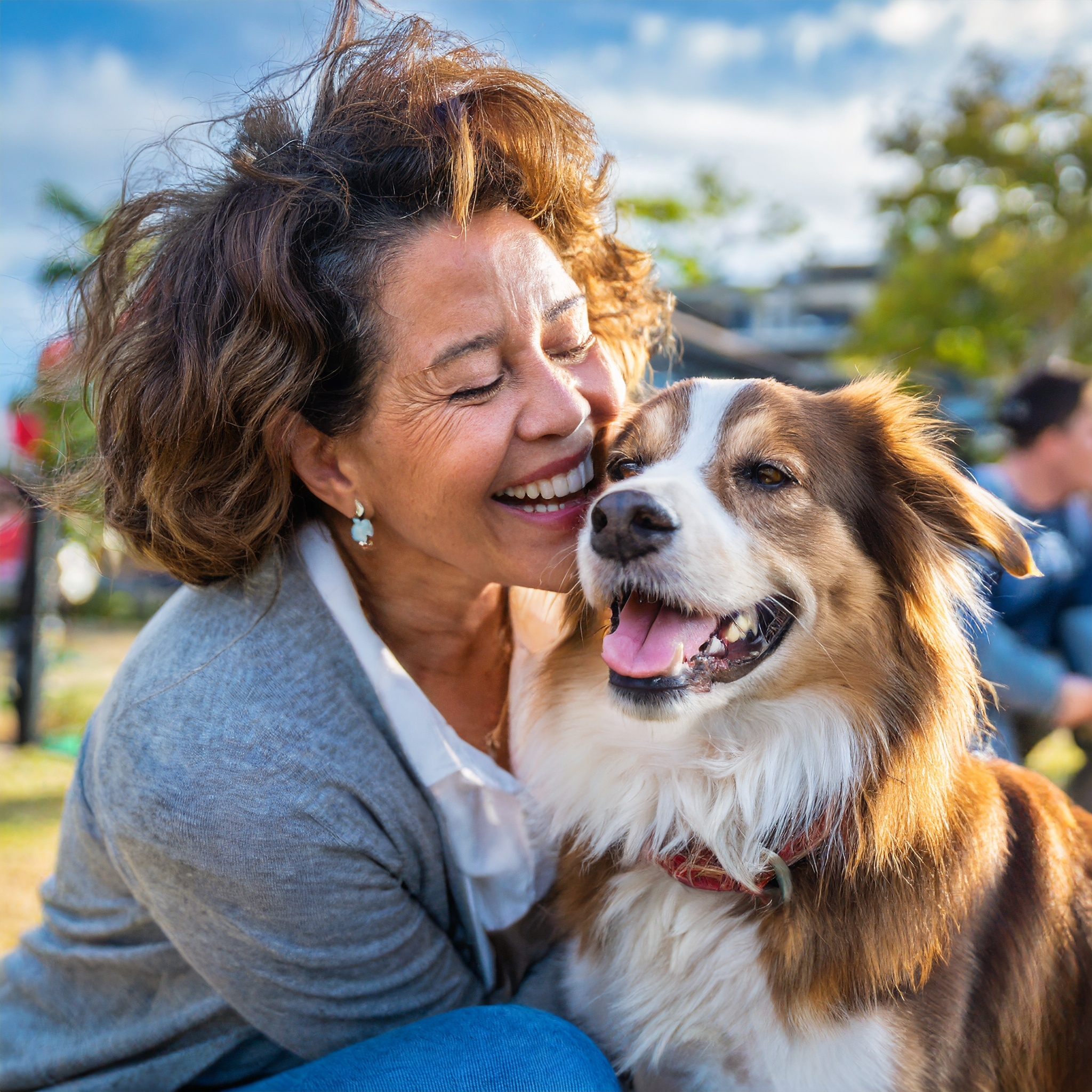
Few things in life are better than being greeted by a wiggly, loving dog when you come home. I love how happy my dog is to see me. She wiggles with joy whether I’ve been gone for 5 minutes or 5 hours. It makes me wonder, though: Is she happy when I’m not there?
Leaving our dogs home alone for a bit is part of being pet parents. As much as we want to bring our pups everywhere we go, this isn’t always possible.
You might be wondering how to teach your dog to be happy alone.
I’ve picked up many helpful tips over the decades from working with my dogs and other dogs too. Today, I’m going to share how to teach your dog to enjoy some alone time. Let’s dive in!
Why Dogs Get Worried
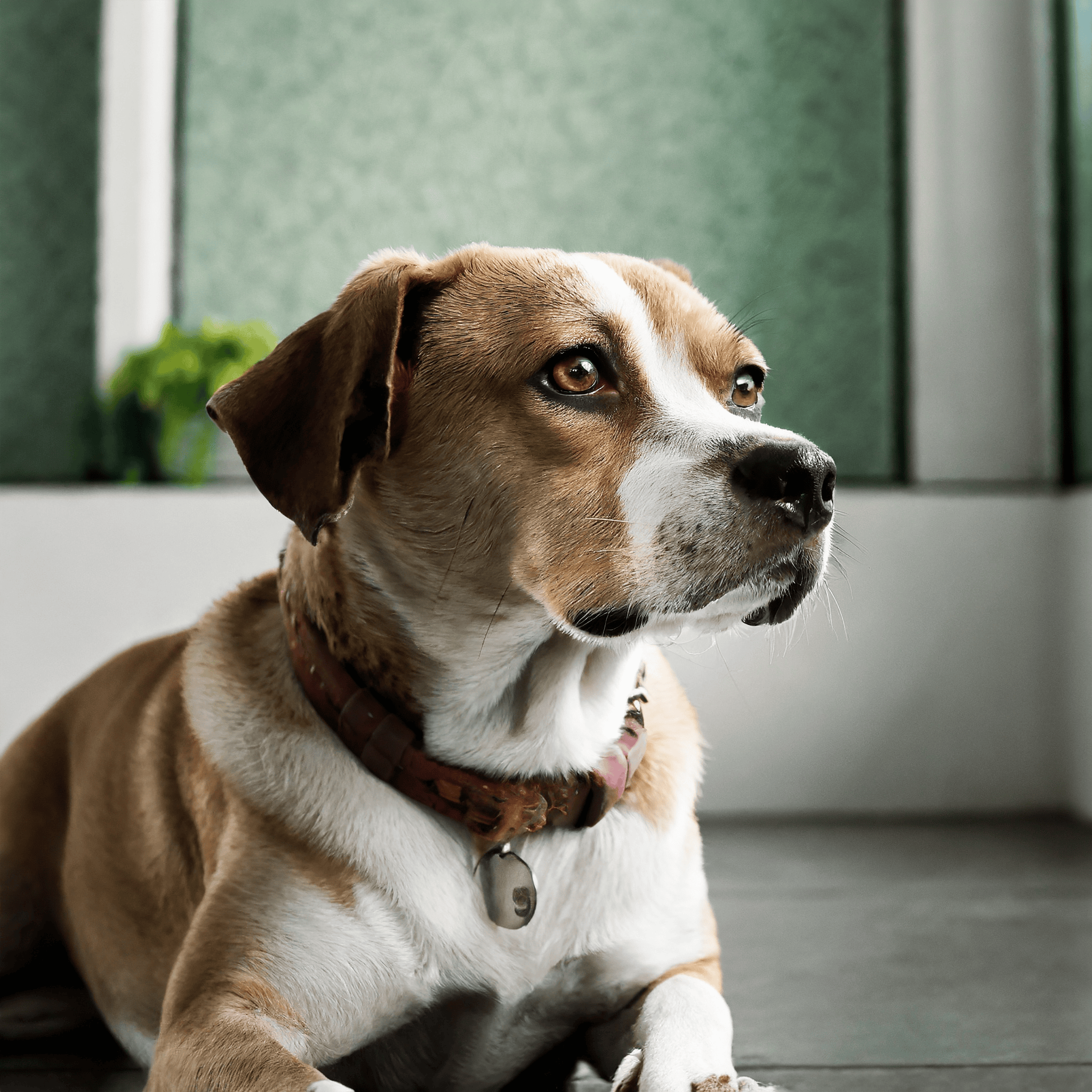
Before we explore my advice, let’s figure out why dogs sometimes get anxious when left alone. This is also known as separation anxiety.
Separation anxiety affects many dogs and can be very difficult on a family. It helps to understand why dogs don’t always love alone time.
Dogs are very social animals, and spending time away from their family can make them anxious. I’ve seen signs of separation anxiety show up as barking excessively or making a mess around the house.
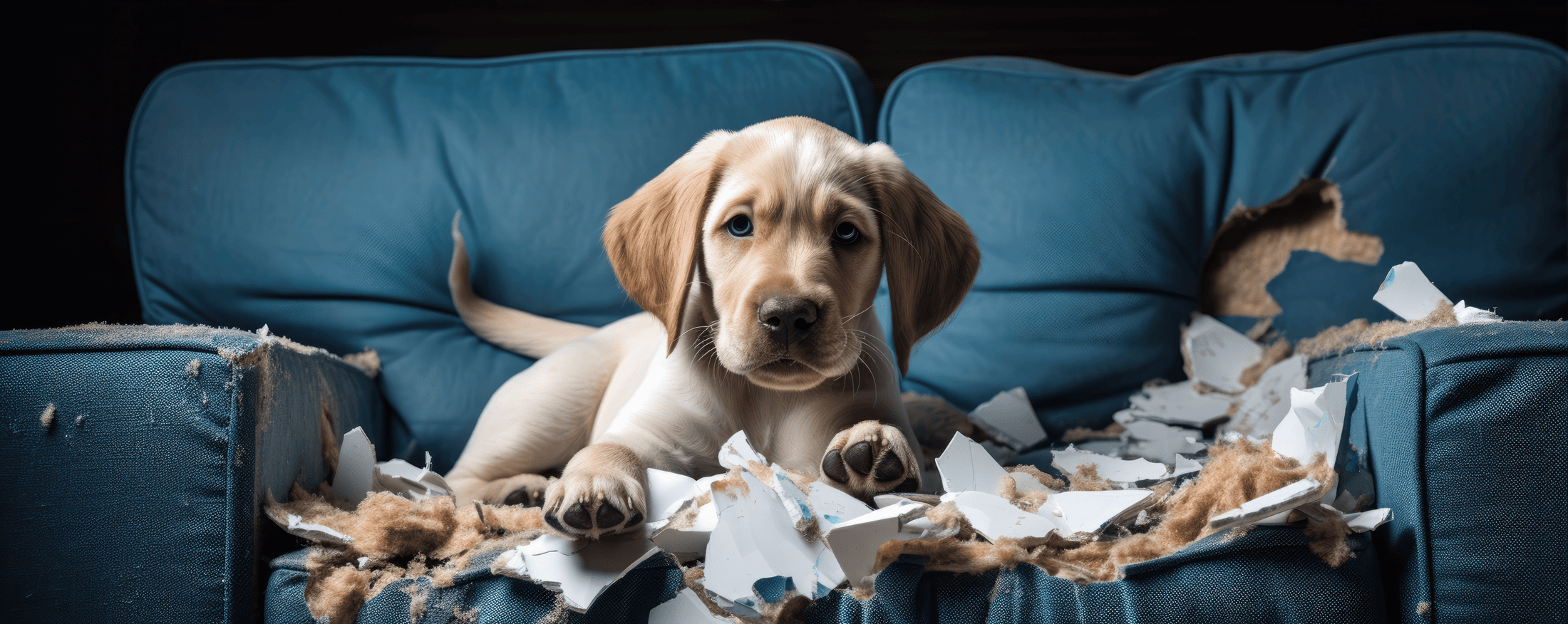
One time, my dog chewed a giant hole in the couch. It didn’t take her long! I was only gone for a few minutes.
As frustrating as this was, I took a deep breath. I reminded myself that my leaving was a big deal to her.
She didn’t understand I would be right back. She was worried she would never see me again.
Talk to Your Dog
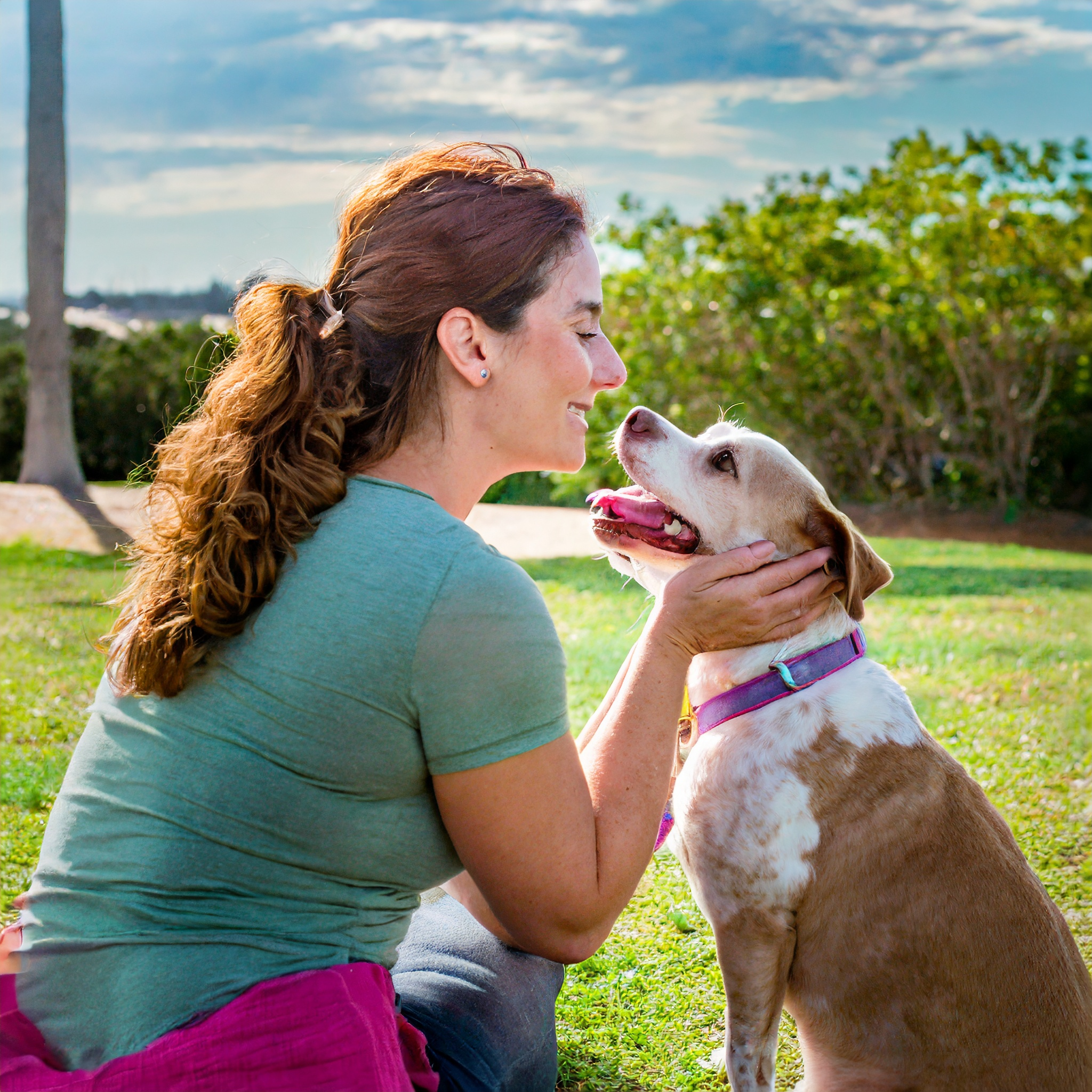
I learned from this experience. Now, when I leave the house, I tell my dog when I will be back.
I make sure to speak to her in complete sentences. I say, “Okay Roxy I have an errand. I will be back in one hour. I’ll see you then!” Believe it or not, this really helps her stay calm. I am sure she understands me.
Try talking to your dog this way. You might be amazed to see how well she understands you. If your dog is showing signs of separation anxiety, this can be incredibly helpful.
Try Crate Training
I use crate training to prevent separation anxiety. The crate allows me to create a comfortable space for my dog when I can’t stay home with her.
This also helps prevent puppies from having accidents or chewing a giant hole in the couch. It’s a win-win!
The crate provides your dog with a little safe space in your home. This is especially important when your dog is home alone.
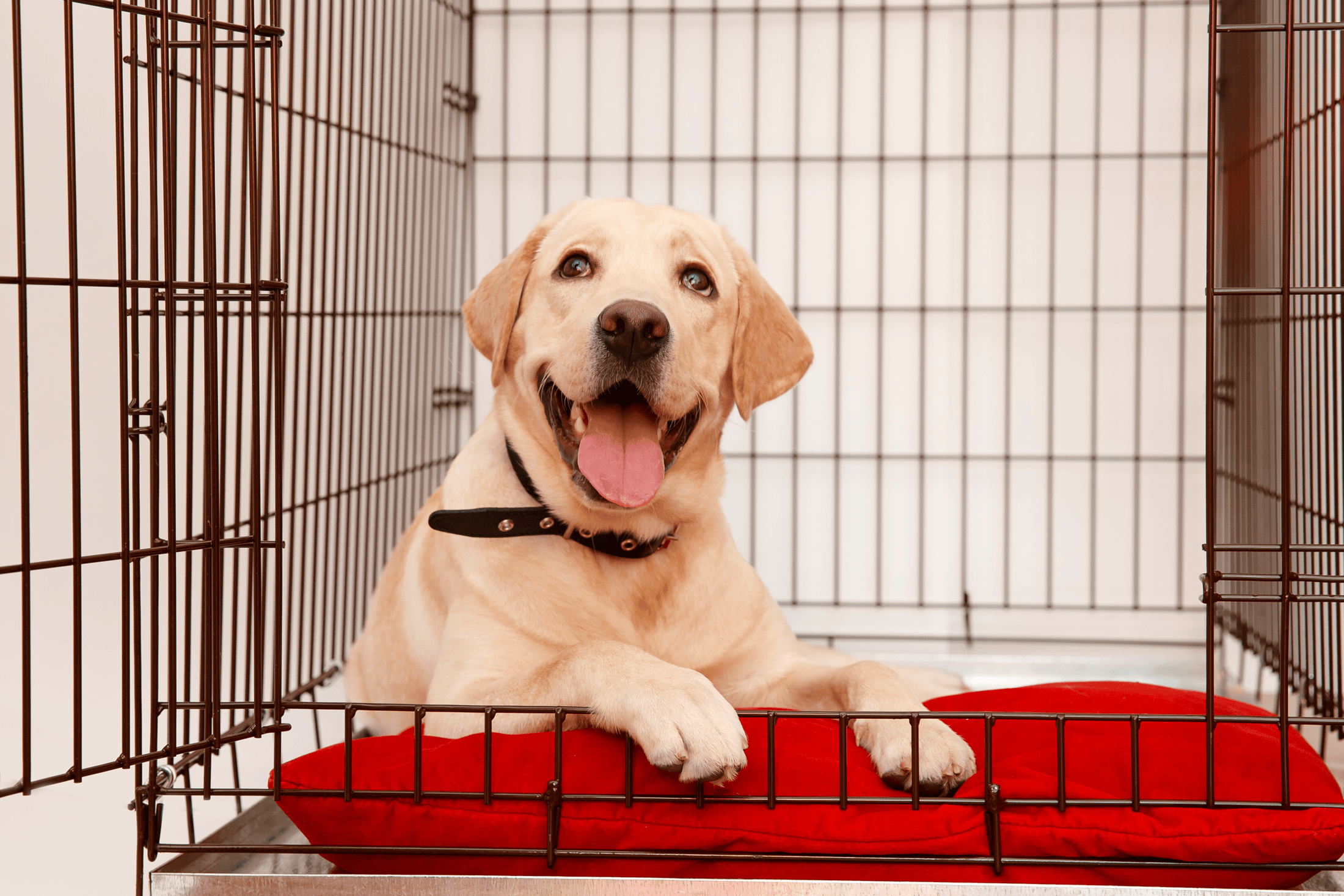
Seeking Shelter
I’ve known a lot of people who felt hesitant at first about putting their dog in a crate. And I can completely understand why! When you see a small wire crate, you might think it looks like a jail cell. But your dog won’t see it this way. The crate can help your dog feel safe and cozy.
The exception would be if you rescued a dog who was kept in a crate for extended periods of time. For these dogs, the crate actually was a jail cell. Please be mindful of your dog’s past experiences with crates.
For most dogs, the crate is great! Being comfortably confined can be soothing to a stressed-out dog. Dogs have an instinct to find a confined area when they are anxious. Just think about what happens when many dogs hear fireworks or a thunderstorm.
My dog, Roxy, gets super freaked out and runs under my bed. She seeks out shelter. Hiding under the bed makes her feel safer. The crate works in the same way!
Make a Cozy Spot
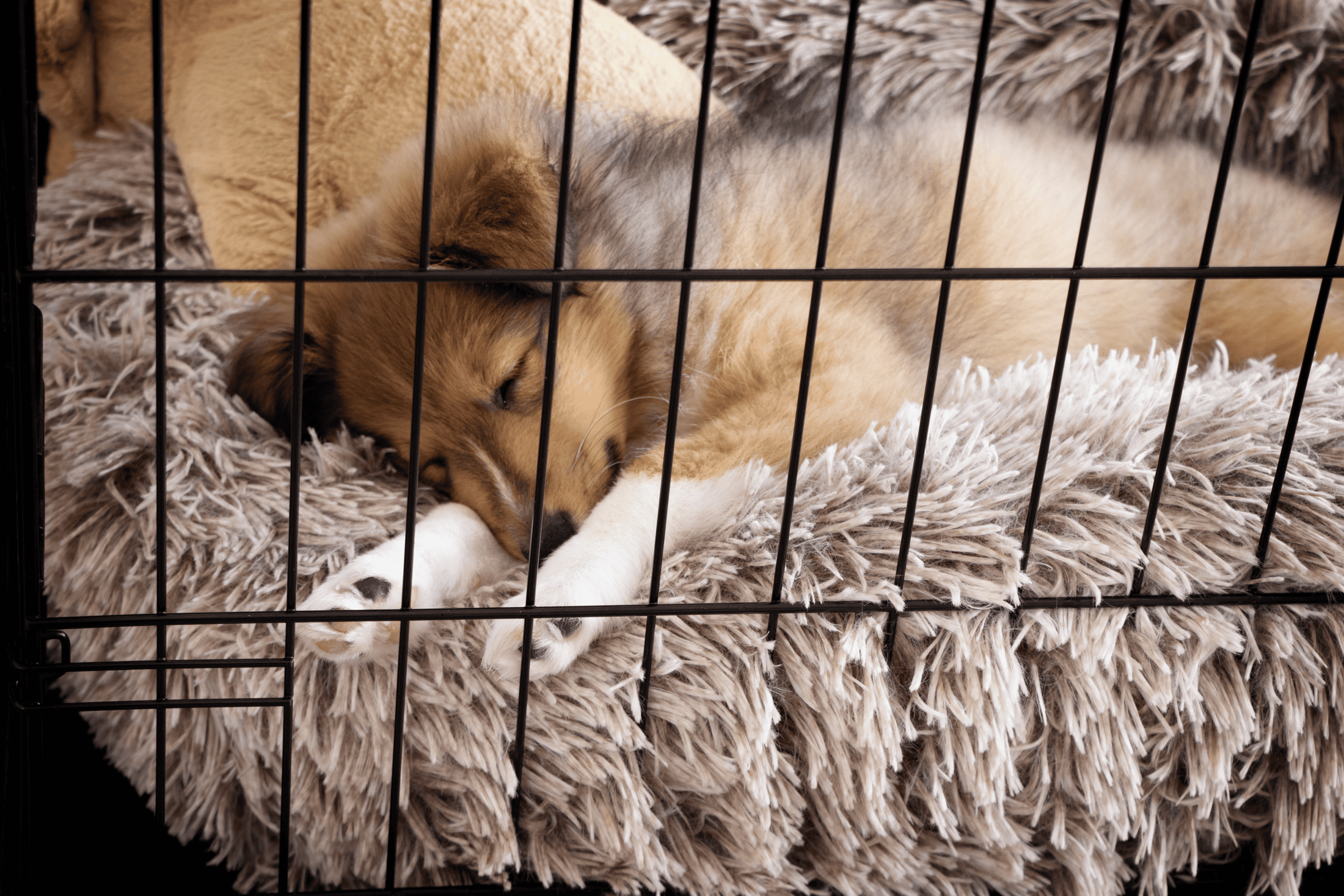
I like to make my dog’s crate really cozy. I want her to have an enjoyable experience while she is in there.
To do this, I fill the crate with my dog’s favorite chew toys, a comfy bed, a soft blanket, and maybe a food puzzle or other enrichment toys. I like these for distracting dogs with anxiety.
You can also put a recently worn shirt of yours in your dog’s crate. This way, she can be comforted by your smell. My dog LOVES when I do this. She will cuddle up with my shirt the whole time!
Be Mindful of Bathroom Breaks
If you want to crate train your dog, please be mindful of his age and potty training needs. A new puppy needs a potty break once an hour. I know–it’s a lot! But it’s important that potty training puppies have a consistent routine.
An adult dog can hold it for longer, but please be compassionate. Dogs shouldn’t be left alone in their crate for more than 5 hours. Most people have more bathroom breaks than that!
Away For the Day?
If you need to be away all day, consider hiring a dog walker or asking a neighbor to help. I know these services can get expensive though, and puppies already cost a lot.
You could also set up a confined area. You could use baby gates or a play pen to give your dog more room to roam. If you use puppy pads, you can keep one inside the enclosure.
But the baby gate is not a dog sitter! This is a temporary solution to prevent accidents and messes around the house.
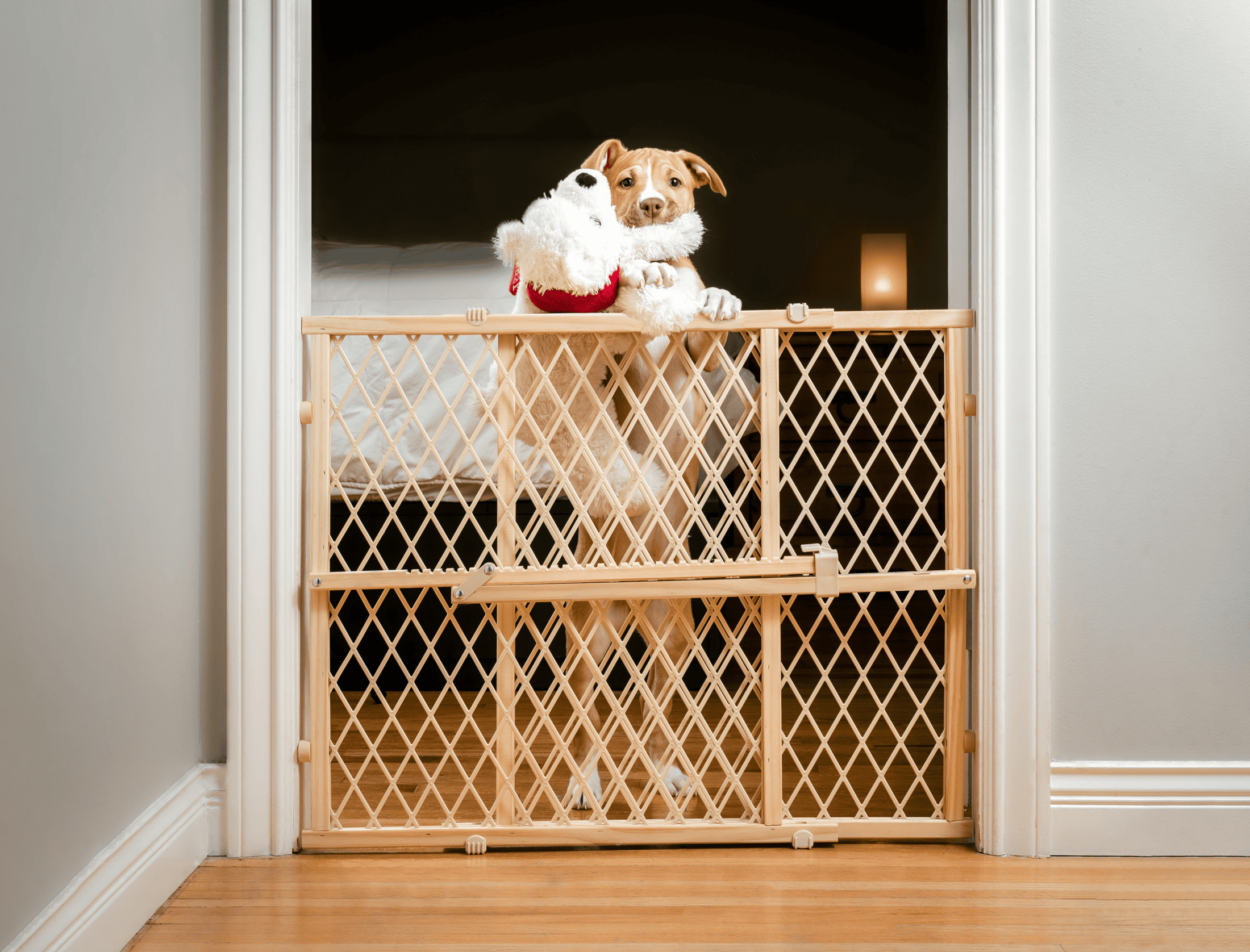
Avoid leaving your dog alone for more than 5 hours. If you leave your dog alone for too long, you can make separation anxiety worse.
The baby gate might keep your house clean, but it doesn’t solve the root issue. You want to prevent separation anxiety, which is more than just accidents.
Teach Your Dog to Love His Crate
Reward your pup for going into his crate. I like to reward my dog with a combination of treats, praise, and TTouches.
This is a good way to teach your dog to love his crate. Making your dog’s crate a happy place is a big deal!
Once your dog learns that the crate is a safe space, he may feel less separation anxiety.
Use TTouches®
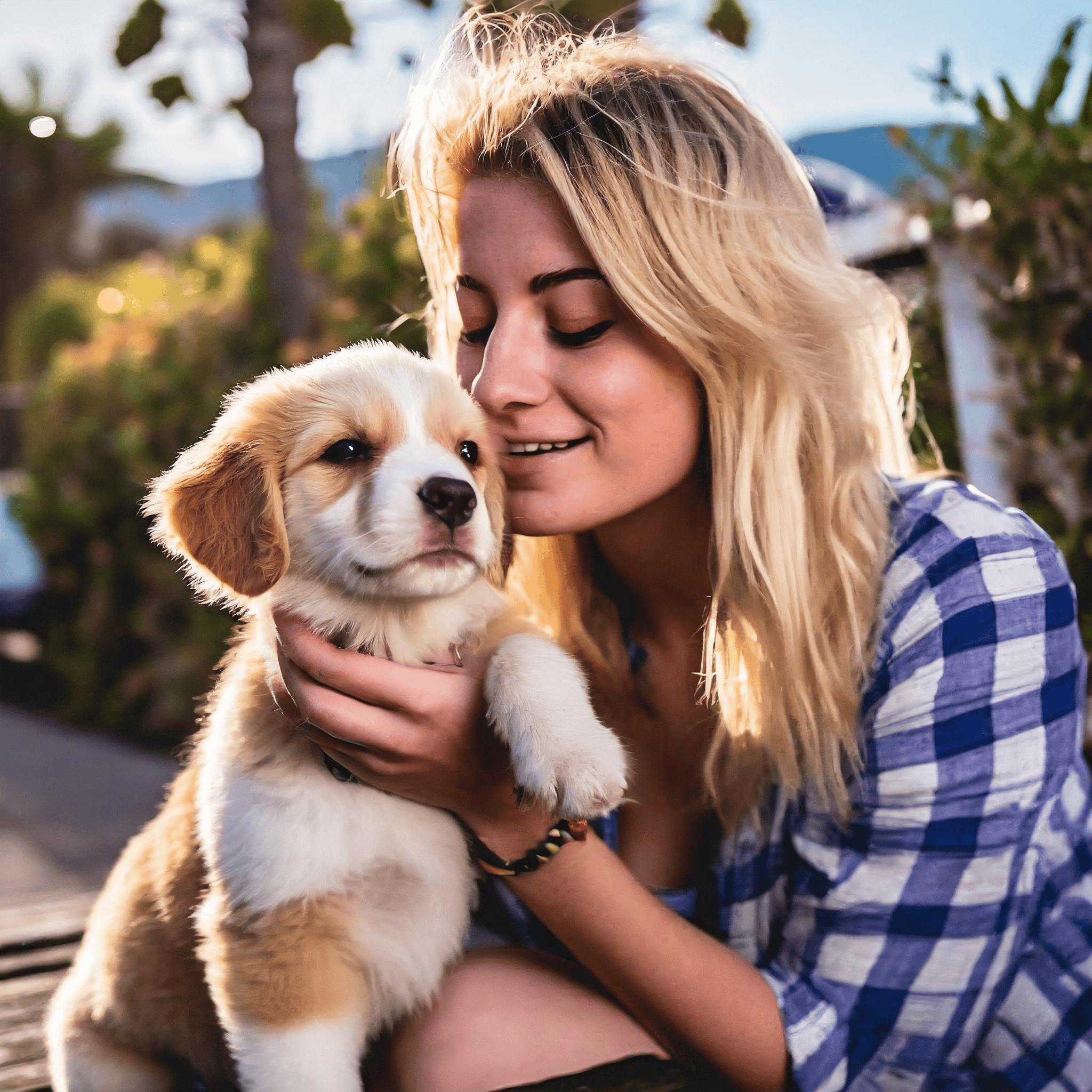
TTouches are my favorite way to spend time with my dog. They also help her remain calm, which manages separation anxiety.
TTouches even give my dog confidence when I am not around. While my dog spends time in her crate, I do some TTouches on her. The ear TTouch is especially good for calming her.
Practicing TTouches in her crate creates positive associations with crate time. When my dog is left alone, she can draw from the confidence that the TTouches give her. I like to think of TTouches as the gift that keeps on giving. Give them a try with your dog! You can find more information about TTouches here.
Practice Coming and Going
One of my favorite ways to help with separation anxiety is by practing coming and going.
I did this with my dog when she was a puppy. Now, she is used to me leaving and coming home. It’s just a normal part of the day! We practiced this in phases. I started with quick trips that only took a few minutes. Then, I gradually increased my time away.
I recommend you try the same thing. Even if you don’t have an errand to run, you could walk to the end of the street and return home. This is a great way to teach your dog that you will always come back. Knowing this will help your dog feel more confident in your absence.
Fun Toys and Games
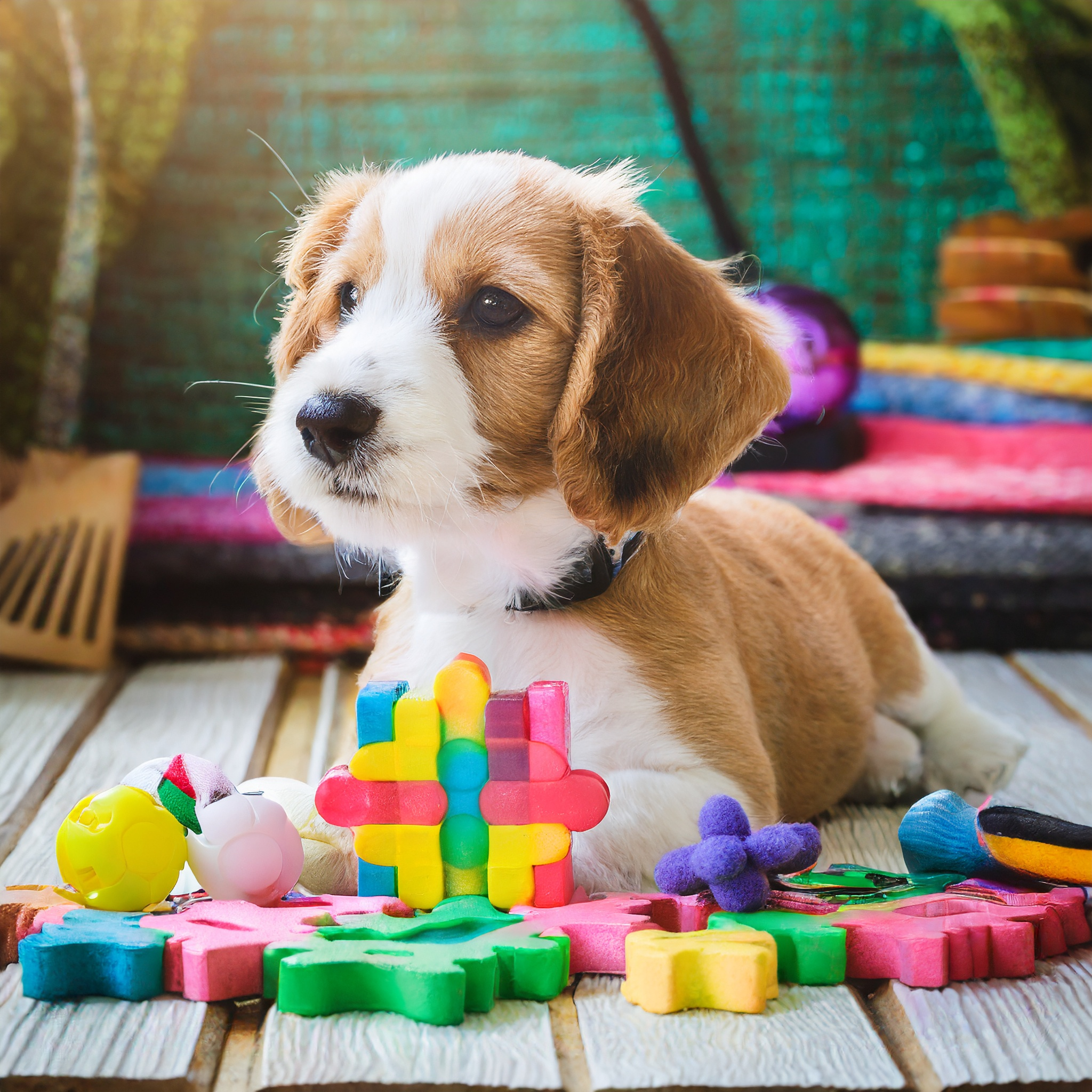
I like to keep my dog’s brain busy with toys and games while she’s home alone.
Toys that give out treats are awesome because they make being home alone a bit like a game. It takes your dog’s mind off missing you.
You could also stuff a KONG chew toy full of treats and freeze it for a few hours. She will stay busy for a while trying to get the frozen bits out of the toy. Who knows, she might still be working on it when you come home!
Music or White Noise Machines
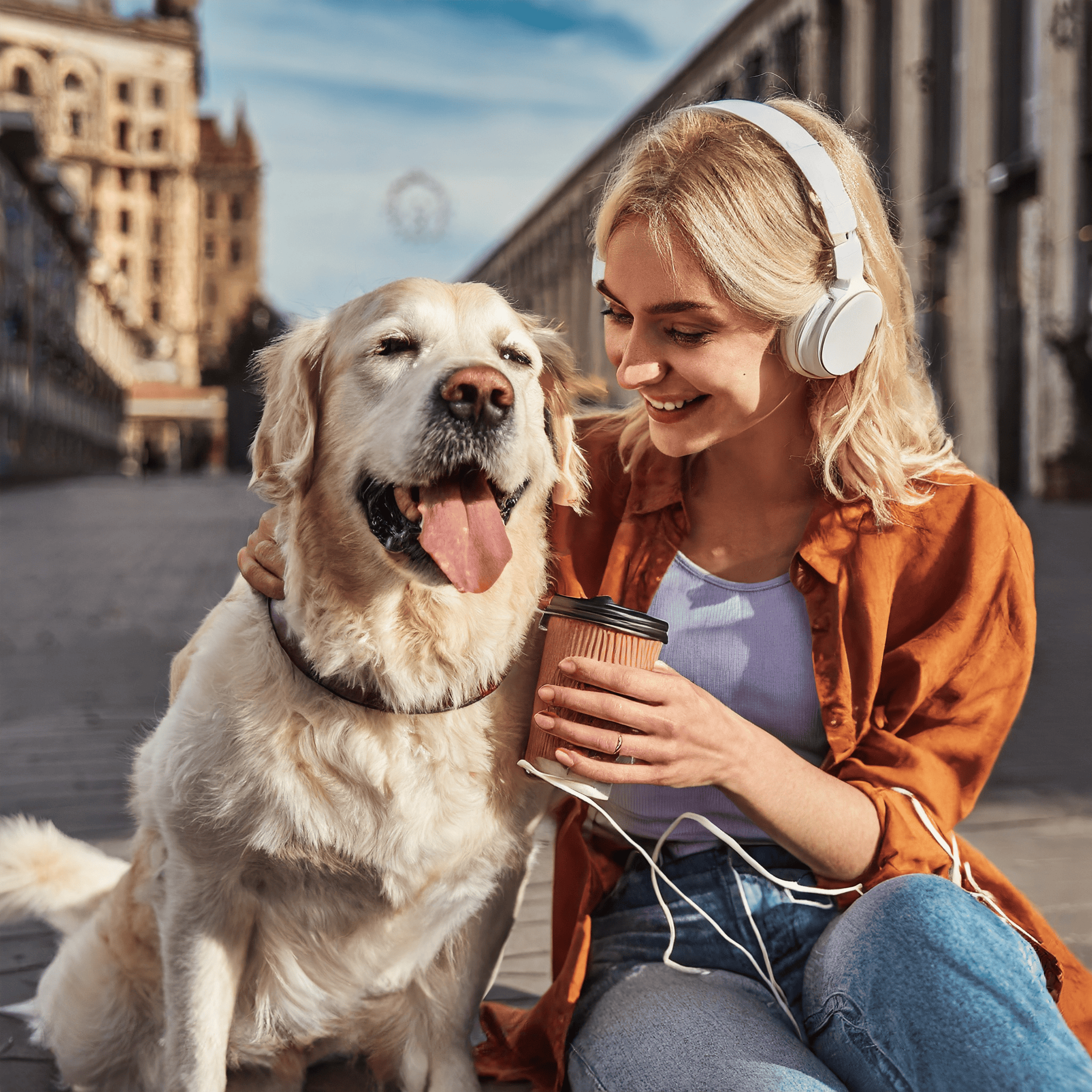
Dogs love music too! I recommend playing music in the background while you are home with your dog.
You can play anything you like to listen to. Your pup will begin to associate your music taste with your presence.
When you leave the house, put on some music. Leave it playing while you are gone. This can comfort your dog while she is home alone.
If you’re not a big music listener, you can try a white noise machine. These can be very calming for dogs, too.
Ask a Pro for Help
If your pup still feels worried when you’re away, it might be time to ask your veterinarian or a dog trainer for help.
These professionals can give you personalized tips based on what your dog needs, making sure you both feel happier.
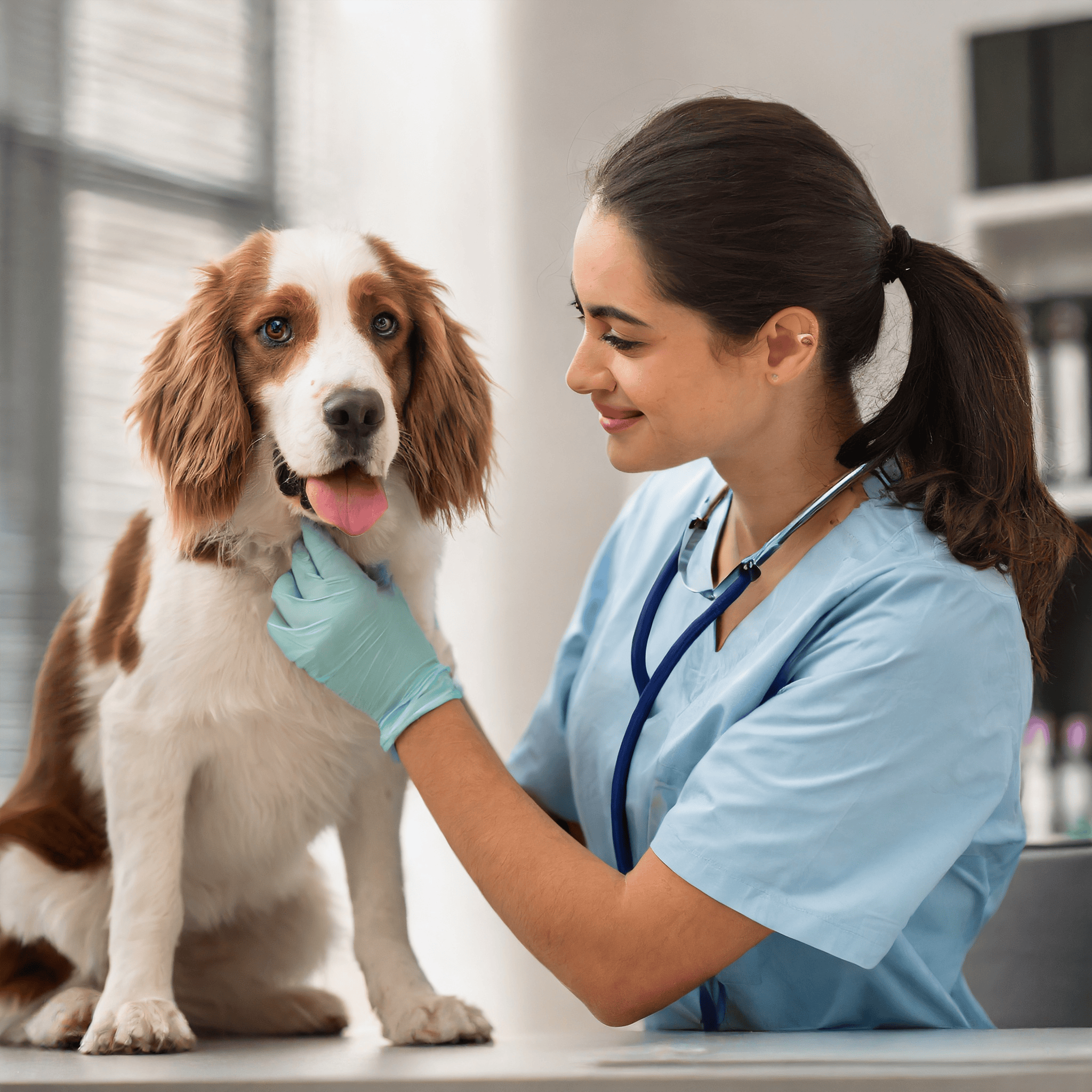
Can Dogs Feel Better over Time?
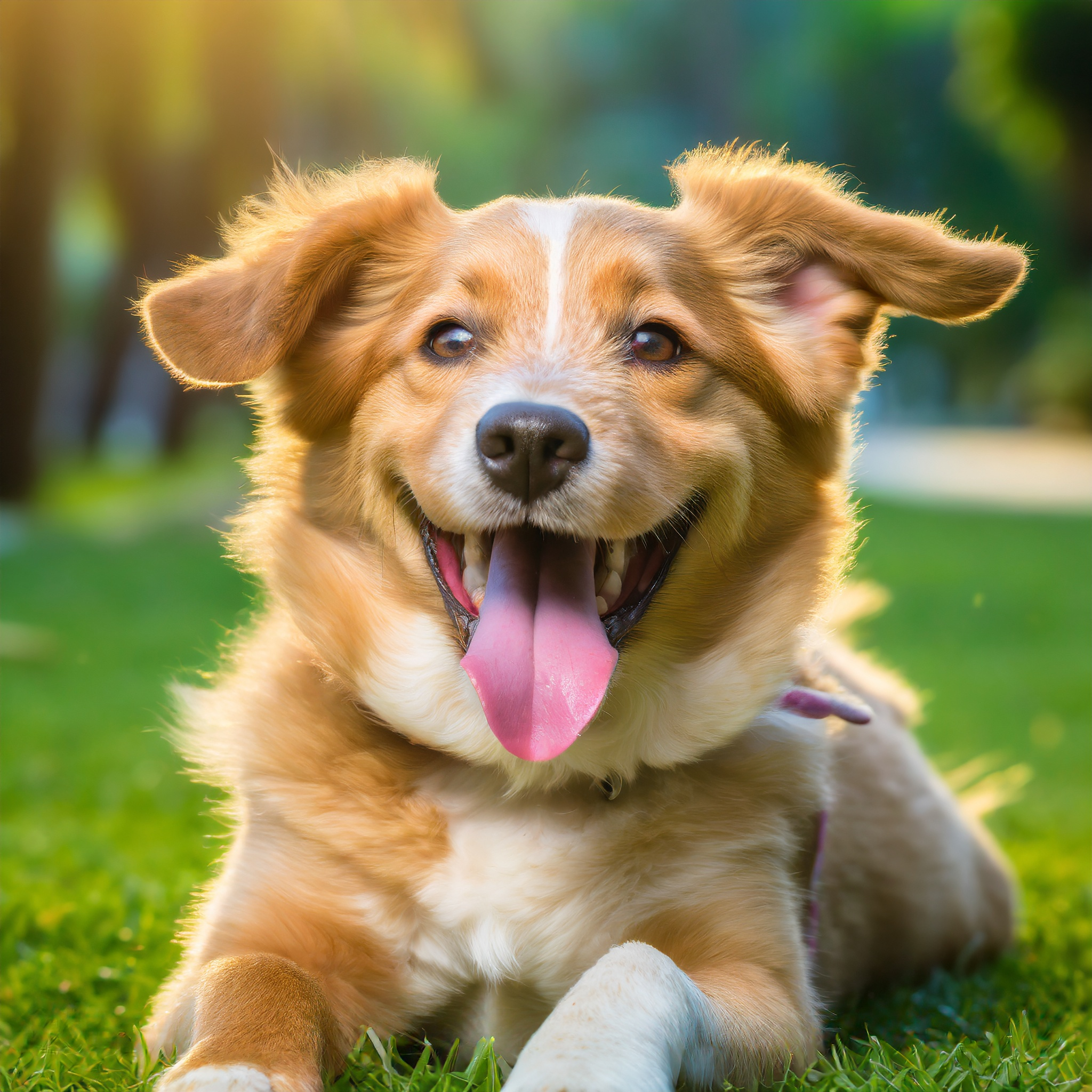
Absolutely! It might take some time, but with love and the right tools, your dog’s separation anxiety can improve.
Remember, it’s all about making your bond stronger and helping your pup feel safe and happy.
“Dogs might be in just a small part of our lives, but to them, we are their whole lives.”
– Unknown






